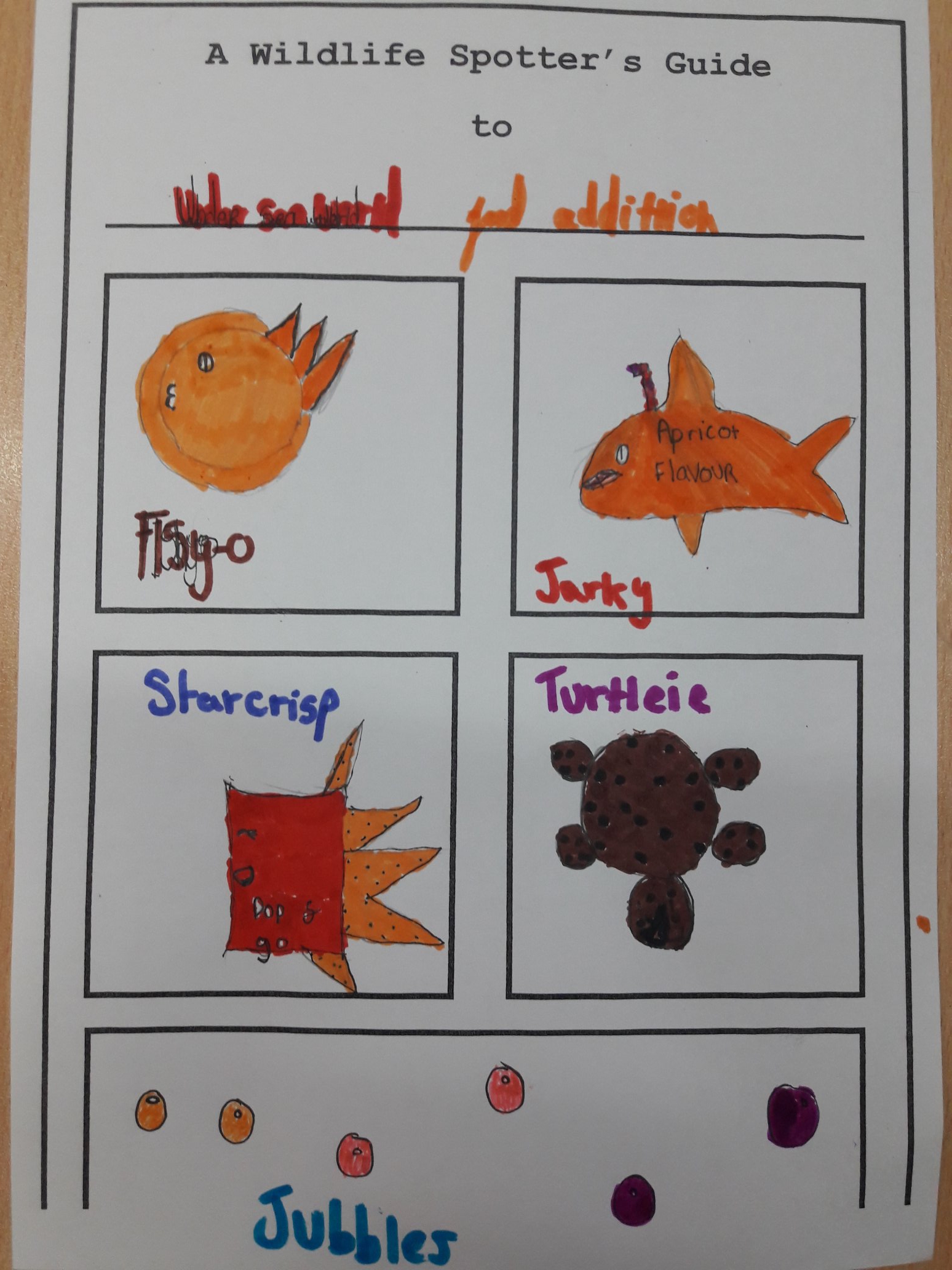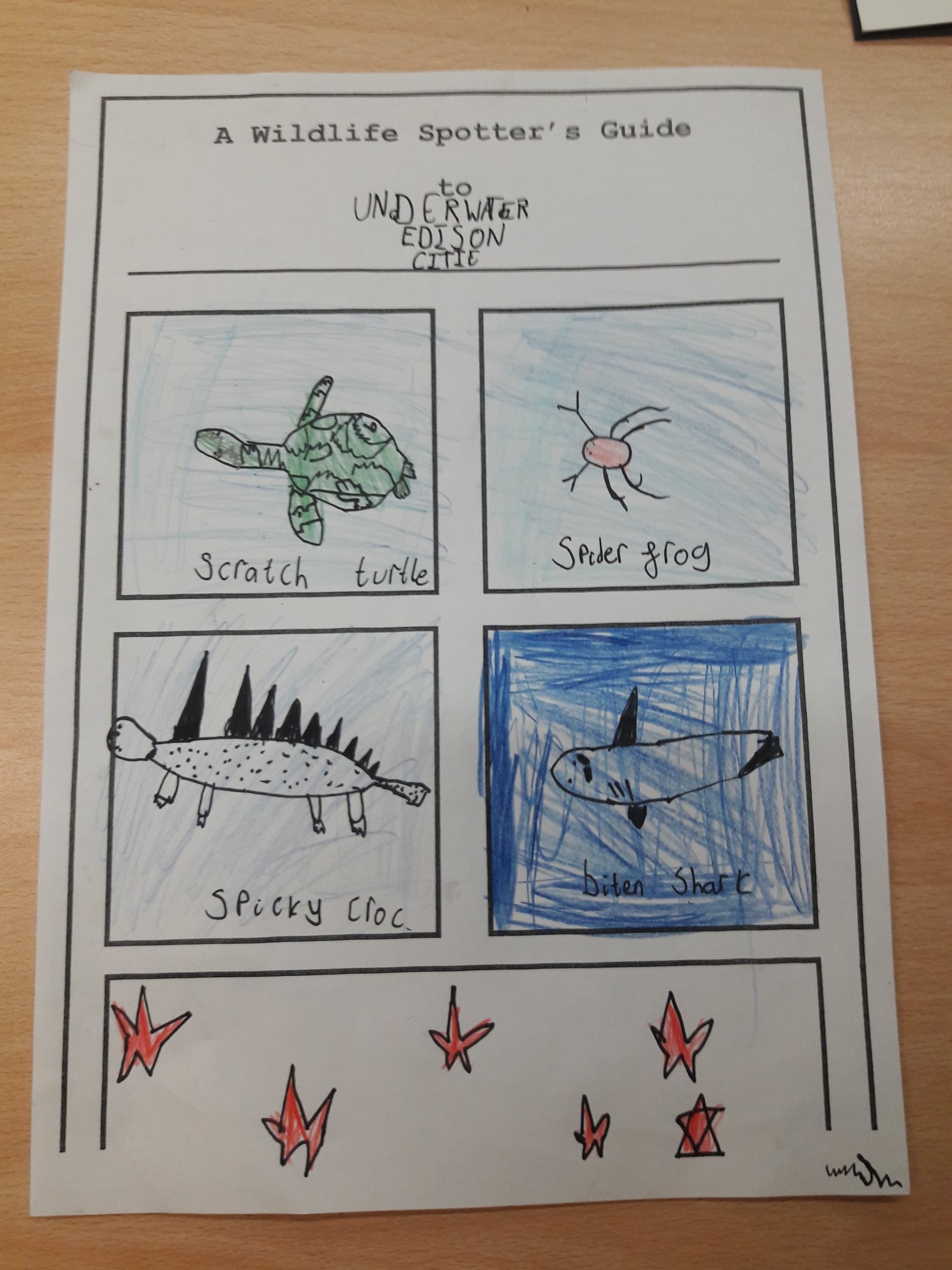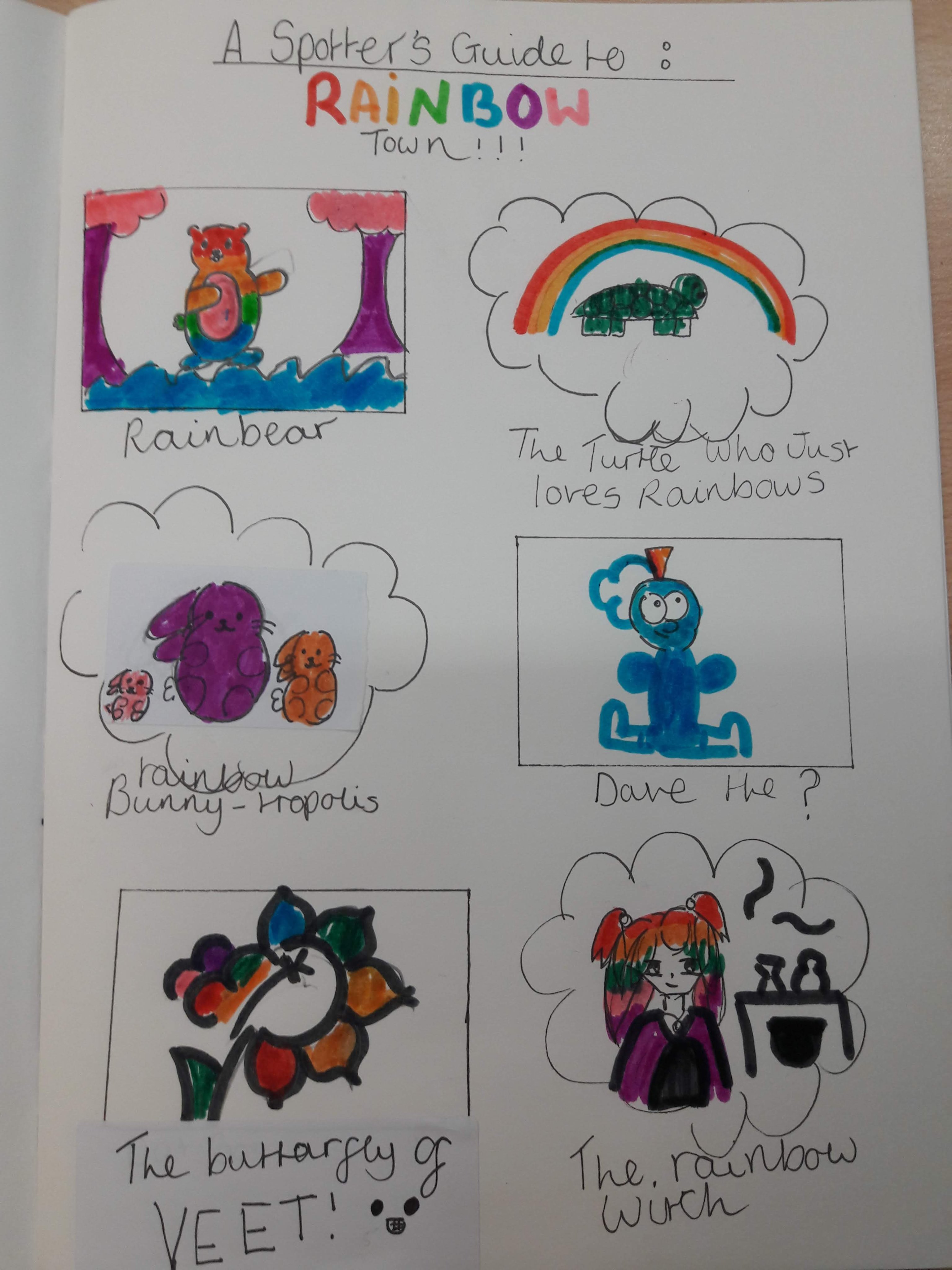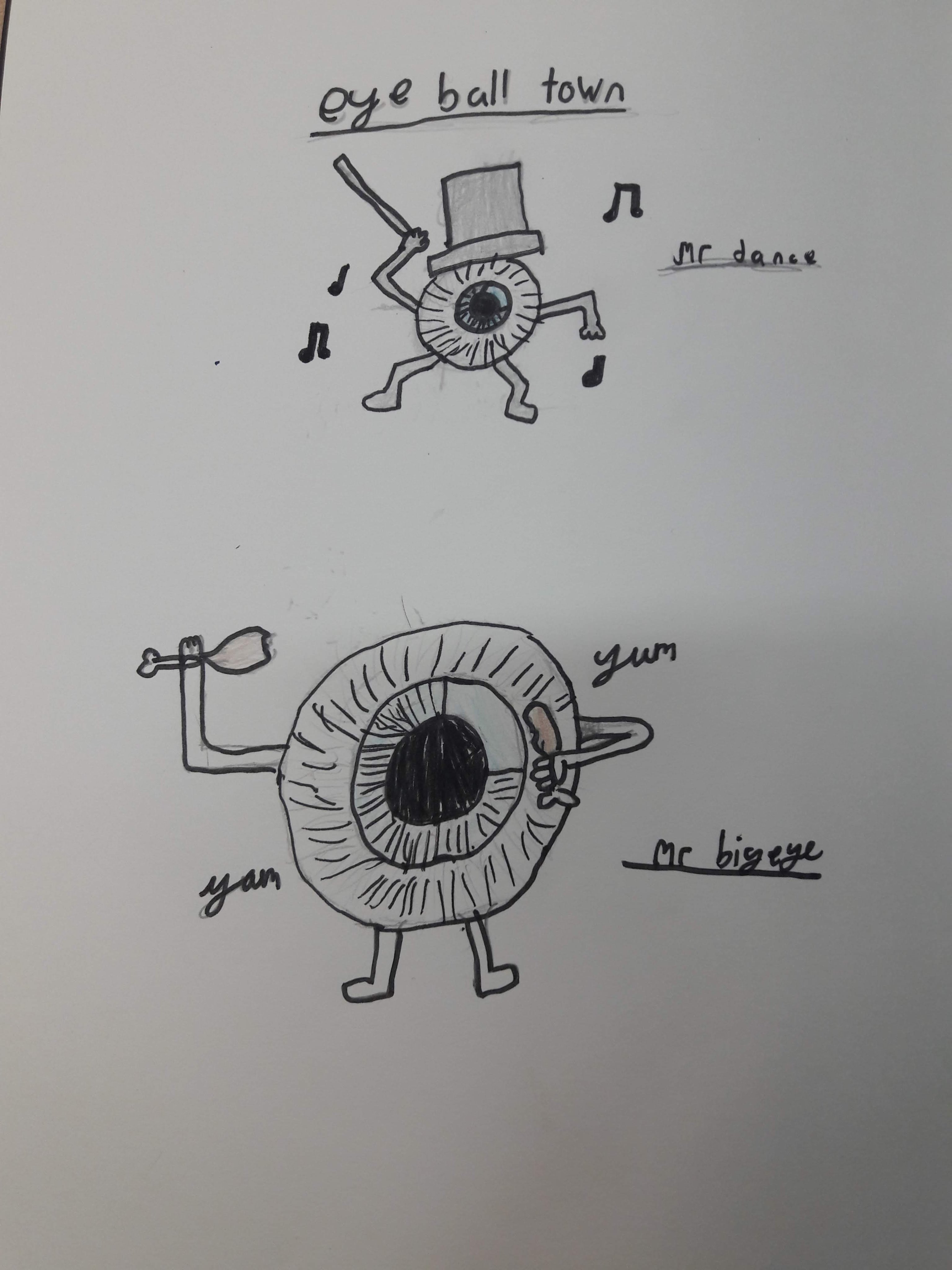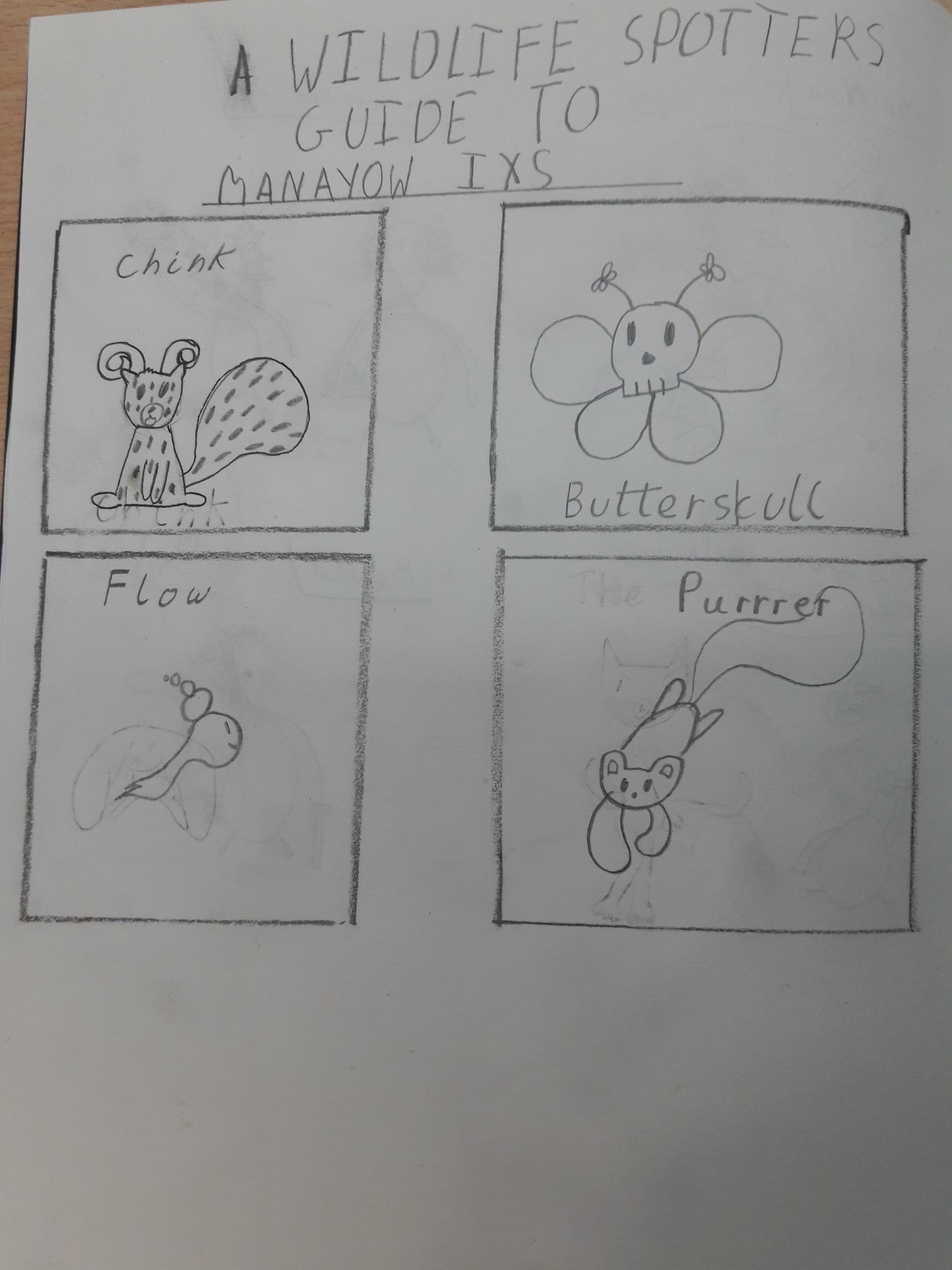Phil Busby of Budding Writers tell us how the Marple Story Makers have been meeting online during the lockdown – keeping the club going until they can get back to physically meeting up in the library.
Phil told us:
We run our Saturday morning session on Zoom, and this is how it works:
• On Friday afternoons we email our children’s parents with a Zoom meeting link and, if there is one, a pdf of the session’s worksheet (we have a list of which families have a printer at home, for those who don’t, we print the sheets out ourselves and drop them off when we’re doing our shopping).
• At ten to ten on Saturday morning we log in to Zoom. The session doesn’t start till ten-o-clock, but there’s always one or two kids who come online early, so we chat with them as the others join in one by one.
• At our end, we work as a two-person team, with Phil presenting, and Susie managing the tech (a bit like a producer on a radio show); she mutes and unmutes the microphones, controls the screen-sharing, and puts up any images we may want to show. In order to do this, mainly to avoid feedback, we have to set up in different rooms of the house. So Phil leads the workshop from the kitchen, while Susie hosts it from the living room (with the door shut between).
• Each session starts with some simple ice-breakers – Tell us about yourself or show and tell… Then something creative – passing round a mimed object; a rhyming game; passing round a story… We’ve found these games all work perfectly well on Zoom, and it’s great reaching out to pass an invisible thing through the screen, seeing a little person five miles away reaching out to take it from you.
But asking ‘Who wants to do this next?’ doesn’t really work. There’s a delay on the internet that seems to vary from one household to another, and this makes it impossible to tell which hand went up first, or who spoke first. So we’ve started inviting our children to participate in a fixed order. The order changes every week, and if a child has nothing to say for a particular exercise, that’s fine. But everyone gets a go, and there’s never any doubt whose turn it is.
• After the games, we show a PowerPoint, which first lets everyone know how our comic is coming on, then introduces the subject we’re going to be looking at this week (developing characters, three panel comic strips, silly adverts, jokes & puzzles, and full page stories are the sessions we’ve run so far).
We’ve found that PowerPoint works really well through Zoom. If you click on the ‘Share Screen’ button, then choose ‘Screen,’ the images from your computer are broadcast to everyone in the meeting. Sometimes there’s a two or three second delay between one screen and another, but this has never caused us any massive problems. We did try sharing a video in our first online session, and that didn’t work so well; it wasn’t so bad on the recorded audio, that seemed to pass through the system fairly unscathed, but the images ended up as a series of jerky still photos. So we wouldn’t recommend anyone trying to run video through Zoom.
Three slides from our PowerPoint on Character Development
• Once we’ve been through the PowerPoint, we start the children off on the week’s creative work. This is when they use the worksheets they’ve either printed off themselves or we’ve dropped off for them (and if anyone ever ends up without a worksheet, we always make sure the layouts are simple enough that they can make their own). This creative time varies from 15 to 30 minutes, depending on how complex the task is. While they’re ‘making,’ the children start off conversations among themselves, they mess about with the ‘chat,’ sending silly messages to us, and each other, and some are now finding out how to get creative with Zoom’s own virtual backgrounds and drawing facilities – all of which results in a lot of chatter and laughter and strange things appearing on screen.
Nonetheless, they always manage to do whatever work we’ve set them. And if, along the way, anyone starts getting too noisy or posting inappropriate stuff, we are able to mute their microphones and wipe the screen clean. So the group is sometimes a bit rowdy, but things never get completely out of hand.
• At the end of each session, we ask the children to share their work – they hold up their pictures and stories to the cameras on their devices, and tell us about what they’ve done. We do this in the same fixed order as the games at the start, so there’s never any argument over whose go it is. Then we remind them to photograph or scan their pieces and load them in to our online classroom on Seesaw.
• Seesaw

Seesaw is an educational platform with which we, as teachers, can set up virtual classrooms completely inaccessible to general internet users. In the classroom, each child gets a journal into which they can load images, written text, video, audio files or links to other web sites. Each journal also has a series of creative facilities, so they can type, draw, or use the cameras and microphones on their own devices to record sound and video straight in.

Everyone in the classroom can see each other’s work, and family members can be invited to see an individual child’s journal. But apart from the teacher, that’s it. Each class is protected by a security code that changes every seven days, and no one else is allowed in.
As a business, Seesaw is aiming itself at large High Schools and education authorities who want lots of complex services. They have to pay for the platform. But there is a free version with limited administrative facilities and a 10 class limit, which is the one we use.
So, while we’re in lock-down, this is where we’ve been asking the children in our group to load their work so that we can all get to see it properly. And it’s been great. Obviously, with the younger ones, we’ve been relying on Mum or Dad to do the uploading, and some of our grown-ups have been a little bit slow getting to grips with the tech. But it’s no more complicated than Facebook or WhatsApp, and once you get started, it’s all very easy. Must be said, the uploads do look better if they come from a scanner, but photos from a phone are more than good enough.

Drawn straight in to Seesaw by Lottie (age 9)
• At the end of each session, everyone waves and shouts, “Bye!! See y’next week!!” We close the meeting while this noise is still going on, then click on to Seesaw to see who will be first to upload their work – it usually takes less than a minute for something to pop up. And once we’ve got it, we can copy it, then load it into Photoshop and get working with it – ready for next week.
Thanks so much to Phil for sharing this with us! Please get in touch if you want to take part in the Club Spotlight feature.






















